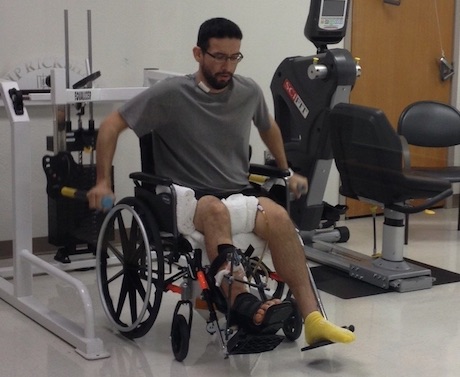In America, the authorities have ordered mandatory vehicle safety recalls to fix faults, but there has never been a mandatory safety recall for a vehicle in Australia.
Instead, the Australian Department of Infrastructure and Regional Development seems confident that manufacturers identify faults “through their own quality assurance processes”.
Perhaps it’s time the department got tougher on safety recalls as there have been reports of manufacturers fixing faults at regular services without even alerting the owner.
In the US, if a safety defect is discovered, the manufacturer must notify the National Highway Traffic Safety Administration, as well as vehicle or equipment owners, dealers, and distributors.
Even though the NHTSA has ordered vehicles to be recalled for free repairs if there is a safety fault, they can still slip through the cracks.
A Texas rider is suing Yamaha Motor Co claiming he was paralysed in a crash because of a sticky throttle on his FZ-09 that was the subject of a “silent”, not public, safety recall.
The recall notice was issued by Yamaha to American dealers to fix the problem only if owners complained.
The Texan rider, Isaac De Lua-Ruiz, 36, is now a paraplegic after crashing his 2016 bike in a carpark when the throttle jammed.
(The throttle issue did not affect Australia where the FZ-09 is called the MT-09.)

SILENT RECALLS
The issue brings to light the dangers of motorcycle companies issuing these so-called “silent recalls”, instead of a proper public recall through official channels. (In fact, this Texan case was worse than a silent recall as owners only had the problem fixed if they complained.)
Silent or in-house recalls do occur and the first an owner may know about it is when their bike has been fixed while in for its scheduled service.
We asked the Australian Department of Infrastructure and Regional Development if they were familiar with the terms “secret recalls” or “in-house recalls”.
A department media officer replied: “No.”
That doesn’t mean they don’t happen. It’s happened to many riders, including us at Motorbike Writer.
VEHICLE SAFETY RECALLS
Does it mean the department is simply ignorant of what is going on?
“Recalls are conducted when an Australian Design Rule non-compliance or possible systemic safety issue has been identified by the manufacturer where there is a likelihood it will or may cause injury to the rider or other road users,” the departmental reply says.
There does not have to be a crash or incident before a recall is issued.
Usually, recalls are activated in Australia after overseas incidents affecting the same vehicle. However, they aren’t necessarily made public. Some are done “silently” when the vehicle comes in for repair or scheduled maintenance.
But what happens if the fault causes a crash? That’s what happened in the case of the Texan rider.
American manufacturers Harley-Davidson and Indian/Victory are very proactive with safety recalls in Australia.
That’s probably because America is such a litigious society and also because of the 1960s-70s consumer rights crusades of American activist Ralph Nader. In 1965 he published a bestseller called Unsafe at Any Speed, a critique of the safety record of American automobile manufacturers.
It led to a number of consumer protection reforms and a toughening of safety recalls.
In Australia, there seems to be a more “cosy arrangement” between the manufacturers and the department.
“The Australian Design Rules (ADRs) set standards for new road vehicles and the Department carries out safety and ADR compliance investigations,” the department reply says.
“However, the vast majority of vehicle recalls are undertaken at the instigation of vehicle manufacturers when safety or non-compliance issues are identified through their own quality assurance processes.
“This proactive approach by industry to identify and notify vehicle safety issues, in conjunction with the Department’s effective vehicle regulation program and our close relationships with manufacturers, is the primary reason Australia has never had to draw upon a mandatory recall for motor vehicles.”
So, are we happy for manufacturers to do their own vigilance on safety issues?
DO THE RIGHT THING
Most companies do the right thing and issue a public safety recall and back it up with a letter to the owners.
However, if the bike has changed hands in a private sale, the manufacturer no longer has a record of the current owner to alert about a safety issue or fault.
That’s why Motorbike Writer publishes all road motorcycle safety recalls.
Obviously we can’t reach everyone, so more should be done for manufacturers to be made aware of current owners.
Surely in these days of networked computers, the change of ownership details could be sent to the manufacturer at least for vehicles up to a certain age.
In Australia, you can check the Product Safety Review website to see if your vehicle has ever been affected by a safety recall, but not whether it has been fixed.
In the US, you can even do a VIN number search on the NHTSA website to find out if a recalled vehicle has been repaired.
Isn’t it time our recall laws were toughened up?
YOUR LEGAL RIGHTS ON SAFETY RECALLS
To check whether your motorcycle has been recalled, click on these sites:
• USA
• UK
• Canada


